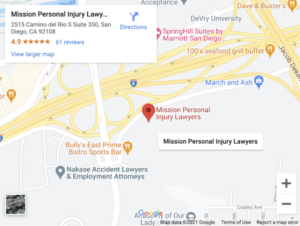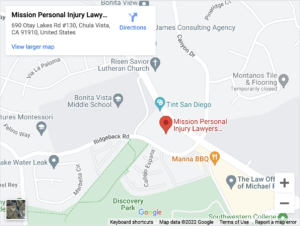
When you file a personal injury lawsuit, you have the burden of proof. You must prove another party caused your injuries due to negligence to recover compensation for your damages. After you file your lawsuit, your attorney will continue to gather evidence to prove your case.
Discovery refers to a specific pre-trial phase during a personal injury lawsuit or civil action. The discovery process is an information-gathering period. Each party may use several discovery devices to obtain information and evidence from the other party or parties related to the action.
The California Rules of Civil Procedure govern discovery in state cases, including interrogatories, requests for production, and requests for admissions. The discovery of admissible evidence is crucial to winning a case.
Table of Contents
What Types of Discovery Are Used in Personal Injury Cases?
There are several types of discovery that your attorney may use to gather evidence. Discovery generally does not apply to information that is privileged or an attorney’s work product.
Depending on the type of case, your attorney may use one or more discovery tools. Discovery requests include, but may not be limited to:
Requests for Production of Documents
Obtaining copies of various documents can help support your claim. It can also give you an idea of what the other party intends to present as evidence during the trial.
Requests for Production of Documents in a car accident case may include copies of:
- Accident reports
- Medical records
- Insurance policies
- Cell phone records
- Driving history
- Witness statements
- Vehicle maintenance records
- Reports from expert witnesses
This list is a short example of documents that either party may request. Most requests for documents contain dozens of requests.
Interrogatories
Interrogatories are a list of questions that must be answered under oath. The questions relate to the case and the issues surrounding the case. As with requests to produce, there could be dozens of interrogatories.
In complex cases, there could be more than one set of interrogatories sent to the opposing party. Interrogatories continue throughout the case. If the other party receives information that should be disclosed under one of the previously answered interrogatories, they must notify the other party.
Requests for Admissions
Each party admits or denies factual statements under oath. By doing so, the parties narrow the issues that need to be argued during the trial. In addition, because the responses are submitted under oath, they can be used in court to question a party who tries to change their story at trial.
Depositions
During a deposition, the attorney asks a person questions. The person is under oath, so they have sworn to tell the truth.
A court reporter records the deposition and transcribes it word-for-word. A sealed copy of the deposition is preserved for use in court, if necessary.
Depositions are used to get answers and information for parties to the case, expert witnesses, eyewitnesses, and other parties who might have information relevant to the case.
Subpoenas
Subpoenas are written orders from the court that compel a specific action. For example, a subpoena may require a person to appear for a deposition or appear in court to provide testimony at a hearing or trial.
A subpoena duces tecum requires the production of documents. This type of subpoena is used to gather evidence from companies and other parties that may have documentation related to the case.
Parties that fail to comply with a valid subpoena may face court sanctions.
What Occurs After the Discovery Phase in a Personal Injury Lawsuit?
Generally, the parties may enter mediation or settlement negotiations after discovery is complete. The information and documents obtained during discovery permit the parties to evaluate the strengths and weaknesses of their case and the opponent’s case.
Having more information allows the parties to assess whether they are willing to settle the case or proceed to trial.
For example, an insurance company may realize that the plaintiff has an excellent case proving that their insured caused the accident. The plaintiff also came across as an honest, trustworthy, and sympathetic witness during their deposition.
Therefore, the insurance company is willing to pay more to settle the case before trial than before the lawsuit was filed.
On the other hand, the accident victim may realize that there is evidence that could indicate the victim contributed to the cause of the accident. If the jury finds that the plaintiff was partially at fault for the cause of the crash, their compensation could be reduced under California’s contributory fault laws.
Therefore, the plaintiff may be willing to take a lower amount to settle the case instead of taking the risk of a jury trial.
Contact Our San Diego Personal Injury Attorneys for a Free Consultation
We want to help you pursue a legal claim against the party who caused your injury. Contact our office to schedule your free consultation with one of our personal injury lawyers in San Diego, CA.


